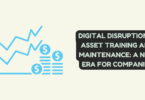
Warehouse
In today’s fast-paced business landscape, data has become an essential part of decision-making processes. With the exponential growth of data, traditional data warehousing solutions have become outdated and ineffective. This is where Snowflake Data Warehouse comes in.
Snowflake is a cloud-based data warehouse that offers a unique architecture designed to handle large amounts of structured and semi-structured data with ease. It provides businesses with a scalable and flexible solution for storing, processing, and analyzing their data efficiently. In this article, we will explore What Snowflake Data Warehouse is, how it functions, what advantages it offers, and why it is such a popular option for companies trying to automate their data management procedures.Learn this HKR Snowflake Training to become a Snowflake Certified professional!
Introduction to Snowflake Data Warehouse
Snowflake Data Warehouse is a cloud-based data warehousing platform designed to handle large-scale data analytics. It is a fully managed service that eliminates the need for manual tuning and maintenance of infrastructure, freeing up time for organizations to focus on analyzing their data. Snowflake provides unlimited scalability by allowing customers to separate compute and storage resources, which can be scaled independently.
Unlike traditional data warehousing models, Snowflake uses a unique architecture that separates compute and storage layers. This separation enables automatic scaling of computing resources based on usage patterns, resulting in more efficient use of available resources and cost savings. Additionally, Snowflake has native support for semi-structured data such as JSON and Avro formats in addition to structured relational databases.
The platform also offers advanced security features such as multi-factor authentication, encryption at rest and in transit, role-based access control, audit logging, and more.
How does It Works?
Snowflake Data Warehouse is a cloud-based data storage and analytics platform that allows users to store, manage, and analyze large amounts of data in real-time. It was designed to be highly scalable, flexible, and easy-to-use for businesses of all sizes. The architecture of Snowflake is based on a shared-data model that separates compute resources from storage, allowing organizations to pay for only what they use.
At the core of Snowflake’s architecture is its virtual data warehouse (VDW), which acts as a logical container for all data stored within the platform. This VDW can be easily scaled up or down based on the needs of the organization, with no need for manual intervention. Additionally, Snowflake offers multiple performance tiers that enable users to choose between different levels of computational power depending on their specific requirements.
Snowflake also employs a unique approach to data loading and processing called “auto-clustering.
What Makes Snowflake Different from Other Cloud Data Warehouses
Snowflake offers several differentiating features that set it apart from other cloud data warehouses. Here are some key features:
Separation of Compute and Storage: Snowflake’s architecture separates compute and storage, allowing independent scaling of both resources. This flexibility allows users to allocate resources according to their needs, resulting in optimized performance and cost-effectiveness.
Multi-cluster Shared Data Architecture: Snowflake’s multi-cluster architecture enables multiple virtual warehouses to access the same data simultaneously. This allows for concurrent workloads and efficient resource utilization, ensuring consistent performance even with high data concurrency.
Automatic Query Optimization: Snowflake’s query optimization engine automatically analyzes queries and optimizes the execution plan. It leverages advanced techniques such as dynamic data pruning, query re-optimization, and intelligent caching to deliver fast query performance without the need for manual tuning.
Near-Zero Copy Cloning: Snowflake’s cloning feature allows for instant and efficient creation of copies of data sets without actually duplicating the data. This capability is particularly useful for tasks like data snapshotting, testing, and creating development environments, as it minimizes storage costs and eliminates data movement.
Time Travel and Fail-safe: Snowflake provides a unique Time Travel feature that enables users to access historical data at any point within a defined retention period. This functionality eliminates the need for maintaining separate data backups or relying on complex recovery processes. Snowflake also automatically protects data against failures and provides strong data durability and availability guarantees.
Native Semi-Structured Data Support: Snowflake natively supports semi-structured data, such as JSON, Avro, XML, and more. It allows for querying and analyzing these data formats without the need for complex transformations or external tools, simplifying the integration of diverse data sources.
Ecosystem Integration: Snowflake integrates with popular analytics and data integration tools, enabling seamless connectivity and data sharing across the data ecosystem. It offers native connectors, SQL compatibility, and interoperability with various business intelligence (BI) platforms, data integration tools, and programming languages.
Snowflake data warehouse pros and cons
Pros of Snowflake Data Warehouse:
Scalability: Snowflake’s architecture allows for seamless scaling of compute and storage resources, enabling users to handle large volumes of data and accommodate fluctuating workloads without performance degradation.
Performance: Snowflake’s query optimization engine and parallel processing capabilities optimize query execution, delivering fast query performance and efficient data processing.
Flexibility: Snowflake supports a wide range of data types and formats, including semi-structured data. It provides native support for JSON, Avro, XML, and other formats, allowing users to work with diverse data sources without complex transformations.
Cost-effectiveness: Snowflake’s pay-as-you-go pricing model and ability to scale resources independently help optimize costs. Users can allocate resources as needed, avoiding overprovisioning and reducing unnecessary expenses.
Ease of Use: Snowflake abstracts the complexities of managing infrastructure, allowing users to focus on data analysis and insights. It offers a familiar SQL interface and integrates seamlessly with popular analytics and data integration tools.
Data Sharing and Collaboration: Snowflake enables secure and controlled data sharing across organizations, departments, and external partners. It simplifies collaboration and supports real-time data sharing without data movement or duplication.
Data Security: Snowflake provides robust security features, including encryption at rest and in transit, role-based access controls, and granular data permissions. It complies with various industry standards and regulations, ensuring data protection and privacy.
Cons of Snowflake Data Warehouse:
Cost: While Snowflake’s pricing model offers flexibility, costs can accumulate based on usage, especially for large-scale data processing and storage. It’s important to carefully manage resource allocation and consider cost optimization strategies.
Learning Curve: While Snowflake provides a user-friendly interface, mastering its advanced features and optimizing performance may require a learning curve for users who are new to the platform or complex data warehousing concepts.
Dependency on Cloud Providers: Snowflake relies on cloud infrastructure provided by Amazon Web Services (AWS), Microsoft Azure, or Google Cloud Platform (GCP). Users are dependent on the reliability and performance of these cloud providers for their Snowflake deployments.
Limited Control over Infrastructure: Snowflake’s managed service approach means users have limited control over the underlying infrastructure. Certain customization options or specific hardware configurations may not be available.
Data Egress Costs: Moving large amounts of data out of Snowflake may incur additional egress costs, particularly when integrating with external systems or transferring data between cloud providers.
Final Note:
In conclusion, a Snowflake Data Warehouse is a cloud-based solution that offers unparalleled flexibility, scalability and performance. By separating storage from computing, it enables businesses to store and analyze data in real-time while reducing costs and increasing efficiency. Its unique architecture allows for faster query processing and seamless integration with various tools and platforms. With the growing demand for big data analytics, Snowflake has emerged as a powerful tool for businesses looking to gain insights and make informed decisions. So, if you are looking for a reliable data warehousing solution that can handle large volumes of data without compromising on speed or agility, Snowflake may be just what you need!






